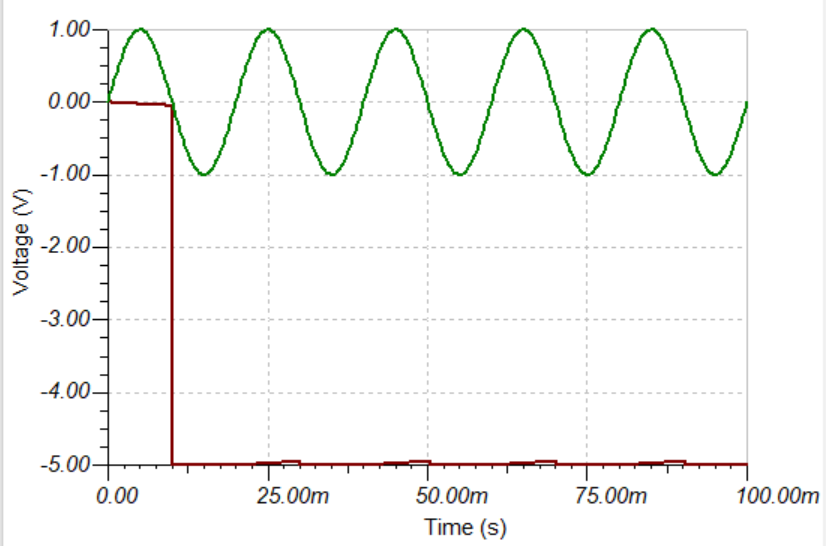Short answer: for the BJT output, it’s actually the base-emitter current that turns on the transistor, not collector current. Likewise, for the FET it’s the gate-source voltage, not gate-drain voltage.
A way to think of it is take note of the impedance of the open-collector / open-drain signal without benefit of a pull-up:
- BJT with Vbe in forward bias: collector is low impedance
- BJT with Vbe not forward biased: collector is high impedance.
Same thing with the FET with its gate-drain voltage in its on and off state.
Now, the thing about the impedance behavior is that it doesn’t care about the actual voltage of the driven line (within limits, see below.)
In both cases, BJT and FET, when the driver transistor is off, the line floats. What it floats to depends largely on what’s attached to it.
If it’s just capacitance, without any other influence it will remain near your negative rail, left over from when the driver was ‘on’, just like your simulation.
If anything, the output driver’s slight off-state leakage will keep the line near the (-) rail. That is, the output driver’s ‘off’ impedance is high, but it’s not infinite.
About that ‘within limits’ above. The off-state transistor or FET will still clamp the output to the (-) rail if for some reason the line tries to go below the rail. This is because both the BJT collector and the FET drain have diode paths:
BJT: collector-base is a PN junction that will forward bias when Vcb is -0.5V. Current path will be from base to collector.
FET: there is a parasitic diode between source and drain, which will conduct if Vds is -0.5V. Current path will be from drain to source.
In other words, you will see no more than one diode drop below ground, or whatever the (-) supply pin is.





